WASHINGTON, George. Letter signed ("G o : Washington") as President, TO SAMUEL HUNTINGTON (1732-1796), Governor of Connecticut, "United States" [New York, N.Y.], 2 October 1789. 1 page, folio (9¾ x 7 7/8 in.), integral blank with recipient's docket "President Washington...," verso discreetly silked, even age-toning (a bit lighter at top of sheet). THE FIRST PRESIDENT FORWARDS THE PROPOSED BILL OF RIGHTS FOR RATIFICATION The new President under the Constitution formally submits the Bill of Rights to the states for ratification. Washington writes: "In pursuance of the enclosed resolution I have the honor to transmit to your Excellency a copy of the amendments proposed to be added to the Constitution of the United States...." The necessity for a clear guarantee of the individual's fundamental rights, and a confirmation that the people and states possessed those powers not delegated to the Federal government was recognized early in the Revolutionary era (most notably by the adoption in 1776 by the Virginia Burgesses of the so-called Virginia Declaration of Rights). A number of influential Federalists believed such a declaration to be entirely unnecessary, granting rights already inherent in the plan of government and in English common law. Hamilton, in a well-known passage from The Federalist , No.84, wrote that "'We, the people of the United States...' is a better recognition of popular rights than volumes of those aphorisms which make the principal figure in many of our State bills of right....The truth is, after all the declamation we have heard, that the Constitution is itself, in every rational sense, and to every useful purpose, a bill of rights." But New York, Massachusetts, Virginia and several other states had ratified the Constitution with the express stipulation that "further declaratory and restrictive clauses" would be added, explicitly to safeguard the rights of the individual. In fulfillment of that condition, the First Congress, in its first session at Federal Hall in New York, voted on September 25, a week before the present letter, to submit twelve proposed amendments for ratification. The resolutions were deemed of such import that the President himself transmitted them to the states. Two of the twelve Representatives failed to acheive ratification, but the remaining ten were duly ratified and became law with Virginia's ratification on 15 December 1791. By then, the number of states in the Union had increased to 14 with the admission of Vermont; three states--Connecticut, Georgia and Massachusetts--failed to ratify the Bill of Rights at the time and did so, symbolically, in 1939. Published in Fitzpatrick, 30:426-427. Exhibited: "Documenting the Constitution; A Manuscript History," United States Supreme Court, Washington, D.C., May 1987-May 1988. Provenance : Anonymous owner (sale, Sotheby's, 25 January 1977, lot 233).
WASHINGTON, George. Letter signed ("G o : Washington") as President, TO SAMUEL HUNTINGTON (1732-1796), Governor of Connecticut, "United States" [New York, N.Y.], 2 October 1789. 1 page, folio (9¾ x 7 7/8 in.), integral blank with recipient's docket "President Washington...," verso discreetly silked, even age-toning (a bit lighter at top of sheet). THE FIRST PRESIDENT FORWARDS THE PROPOSED BILL OF RIGHTS FOR RATIFICATION The new President under the Constitution formally submits the Bill of Rights to the states for ratification. Washington writes: "In pursuance of the enclosed resolution I have the honor to transmit to your Excellency a copy of the amendments proposed to be added to the Constitution of the United States...." The necessity for a clear guarantee of the individual's fundamental rights, and a confirmation that the people and states possessed those powers not delegated to the Federal government was recognized early in the Revolutionary era (most notably by the adoption in 1776 by the Virginia Burgesses of the so-called Virginia Declaration of Rights). A number of influential Federalists believed such a declaration to be entirely unnecessary, granting rights already inherent in the plan of government and in English common law. Hamilton, in a well-known passage from The Federalist , No.84, wrote that "'We, the people of the United States...' is a better recognition of popular rights than volumes of those aphorisms which make the principal figure in many of our State bills of right....The truth is, after all the declamation we have heard, that the Constitution is itself, in every rational sense, and to every useful purpose, a bill of rights." But New York, Massachusetts, Virginia and several other states had ratified the Constitution with the express stipulation that "further declaratory and restrictive clauses" would be added, explicitly to safeguard the rights of the individual. In fulfillment of that condition, the First Congress, in its first session at Federal Hall in New York, voted on September 25, a week before the present letter, to submit twelve proposed amendments for ratification. The resolutions were deemed of such import that the President himself transmitted them to the states. Two of the twelve Representatives failed to acheive ratification, but the remaining ten were duly ratified and became law with Virginia's ratification on 15 December 1791. By then, the number of states in the Union had increased to 14 with the admission of Vermont; three states--Connecticut, Georgia and Massachusetts--failed to ratify the Bill of Rights at the time and did so, symbolically, in 1939. Published in Fitzpatrick, 30:426-427. Exhibited: "Documenting the Constitution; A Manuscript History," United States Supreme Court, Washington, D.C., May 1987-May 1988. Provenance : Anonymous owner (sale, Sotheby's, 25 January 1977, lot 233).
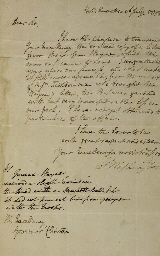

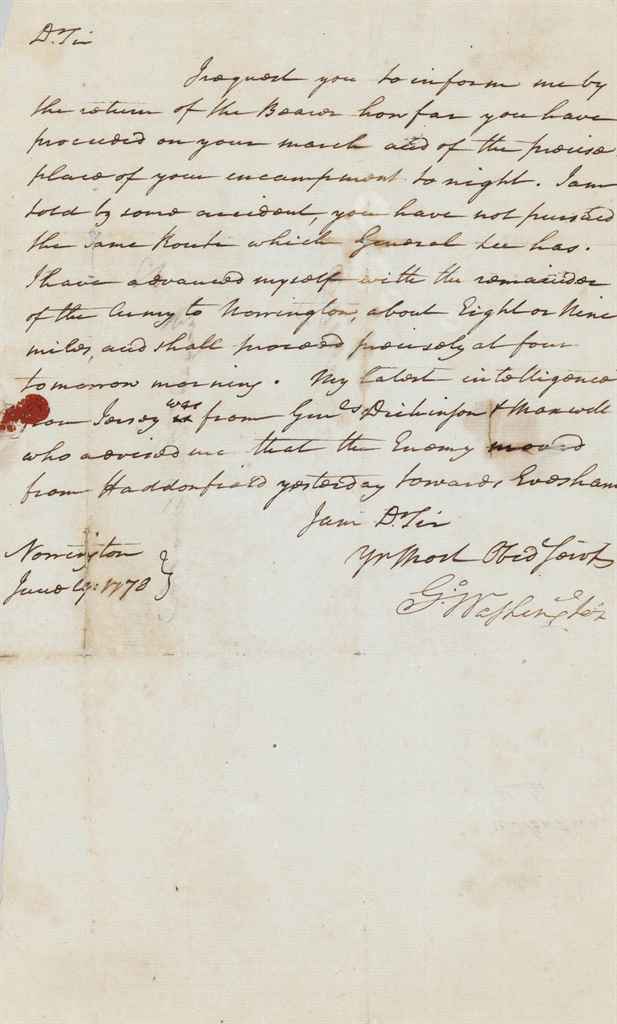
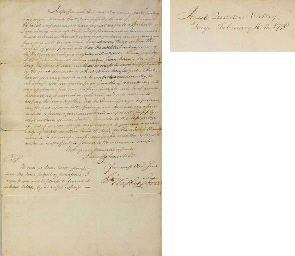
.jpg)
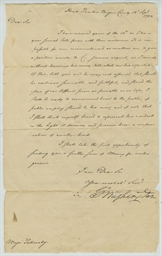
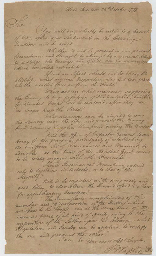
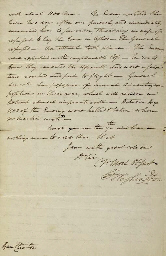
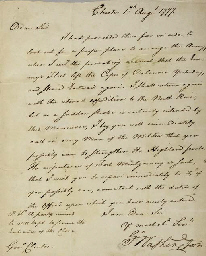
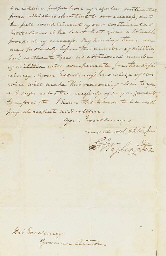
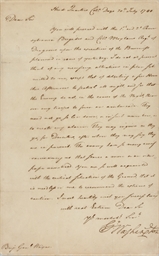


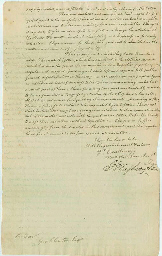
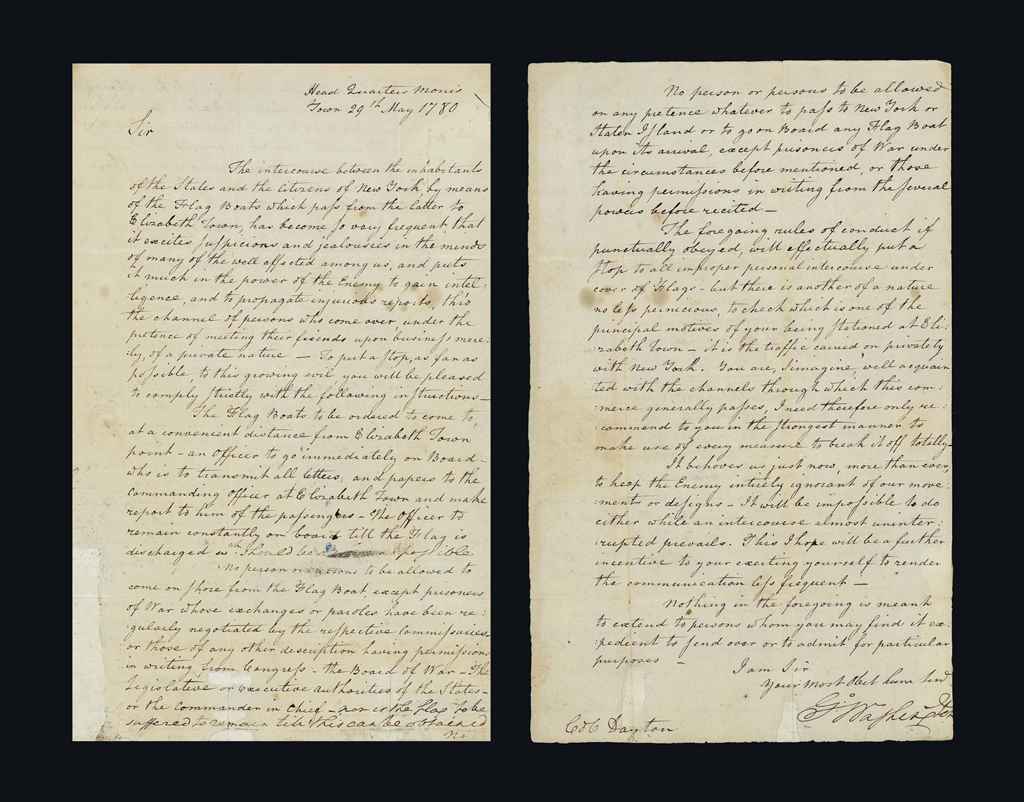
Testen Sie LotSearch und seine Premium-Features 7 Tage - ohne Kosten!
Lassen Sie sich automatisch über neue Objekte in kommenden Auktionen benachrichtigen.
Suchauftrag anlegen